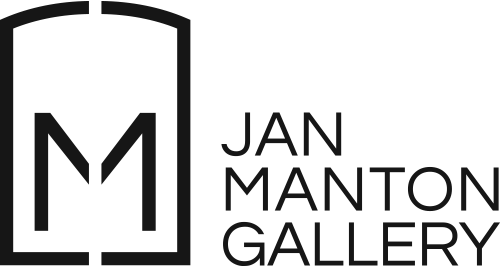Flesh for Fantasy Exhibition Essay by David M Thomas | 23.06.23
Artwork: Speculative Reflections (Tangerine), 2023, acrylic on Italian linen with custom mirrored tangerine glass panel on steel stand, 144 x 114cm. Image by Carl Warner.
Flesh for Fantasy
By David M Thomas
How do we reflect on art? And how do we reflect on the sensuous in art?
Painting for some is an art activity, others a profession, some a hobby, and for a few it is a life—or life force. Natalie Lavelle is one of the latter. For Lavelle, painting is so central to her personhood that her works act as proxies for her—embodying her energy, enthusiasm, and spirit. They (Lavelle and the Paintings) demonstrate glitchy, material, indexical misbehaviour. When things don't do what they are supposed to, when materials and processes don’t work out, the failure is embraced, explored, and transformed. Nat takes the L, as the kids like to say.
But why is Lavelle so interested in Against Interpretation (1966), a collection of essays written by Susan Sontag at the beginning of her career? Lavelle reports that Sontag presents a strong singular female voice, who asks, “how can we experience art in a direct, unmediated manner?” Lavelle also explained how she deeply admires Sontag’s intense focus, her arguments, and the total commitment of her intelligence. Paul Thek—a somewhat unsung hero of the New York art scene of the 1960’s—inspired Sontag’s collection of essays, and in turn she dedicated her book of essays to him. Thek compelled her to deal sensuously with her unmediated experience, especially when experiencing his work, work that reconnected the mind to the body. Thereafter Sontag saw art as more than a memetic or storytelling enterprise. An art practice could in fact be “a new kind of instrument, an instrument for modifying consciousness, and organising new modes of sensibility.”
Sixty years after the publication of Against Interpretation (1966), there is still a tendency for folks to read art works in the way they may expect to read books or watch a movie. We immediately ask, what does it mean? What’s it about? If we don't know, we ask a critic or academic to explain it to us. We might remind ourselves that Sontag was essentially a literary critic—language was, for her, a master medium. She read obsessively—comprehension and interpretation, for Sontag, were akin to breathing. Lavelle also asserts that, as we have become habituated to extracting meaning derived from symbolic and iconic signification—seeing paintings as sign systems, or epistemological points of art historical reference—we miss the joy in the sensuous immediate physical reality of what is in-front of us.
For this reason, Lavelle’s works are made with deliberate attention to leaving space for the viewer’s own experiences, feelings, and reflections. Lavelle’s work indexes her thoughts and material processes, whilst resisting the desire to narrate and copy. Each decision is clearly visible—every hesitation, every grand gesture big and small, made evident in the work's manufacture. In this way the works document their coming into being, whilst demonstrating Lavelle’s thoughts and operations.
Lavelle has made a series of paintings and object works that—through their fleshy tone and colour, bodily scale, materiality, and sensuous surface—evoke and reflect human bodies and their sensuality. There are works that occupy the three-dimensional gallery space, play with their own object-hood, and address the viewer as reflective simplified bodies in space. These works also reflect the physical object-hood of the viewer—a disarming revelation for folk stuck in their heads, pretending they are godlike ethereal beings, their own body an afterthought, a less durable Tesla for the self, a fantasy.
About the writer:
Dr David M Thomas is a practicing visual artist, music maker and educator living in Meanjin/Brisbane. Working across painting, installation, sculpture, and sound performance, Thomas has a specific interest in the philosophy of art and convergent technologies.
https://www.davidmthomas.com


